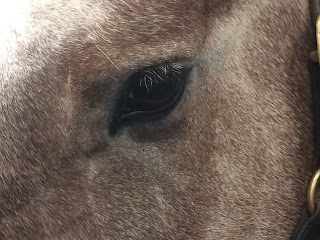There are some really simple techniques that you can use with your own horse to assess for soreness, stiffness, or restriction in range of movement.
Recently I posted on Facebook:
"Use this video to help you learn how to assess if your horse is sore through his back, and please share it with your friends so that they can do the same. This horse is not sore through his back. See how the muscle is soft, and you can see it ripple in front of my fingers like a gentle wave. I am pressing into the muscle, moving against the direction of the hair, as I am more likely to pick up subtle problems this way. If your horse reacts differently to this, then I recommend assessment from a Chartered Physiotherapist (www.acpat.co.uk in the UK), Osteopath, Chiropractor, or Vet. You can see a full assessment at www.thehorsephysio.co.uk, or on YouTube here:
https://youtu.be/
You can view the Facebook post and the video here
The response was huge - within 24hrs the video had been viewed nearly 5000 times, and shared by 45 people. The subject is an emotive one - no one likes to think of their horse being uncomfortable, and discomfort can lead to behavioural problems or reduced performance. It's always difficult to work out whether problems are due to pain, behaviour, or training - which is exactly why I've developed the methodology of Brain, Pain or Training?, supported by 27 guest authors, all top equestrian sports people or therapists.
To have a go at this technique to assess for soreness in the back, simply feel through your horse's back muscles by pressing in with your fingers about as hard as you would push to dent a football (i.e. fairly firmly), and sliding your hand along the back muscles from the withers to the tail, one side at a time. Go first in the direction of the hair, and then, if there is no adverse reaction, slide back against the direction of the hair. Your horse should remain relaxed throughout, there should be no sign of discomfort, and the muscles should feel soft like play dough throughout.
If you feel or see your horse tense up or react uncomfortably, it may be worth asking someone more experienced to assess him - a qualified professional such as a Chartered Physiotherapist, Osteopath or Chiropractor.
This is a 'have a go' technique, and it would be worth getting together with a couple of friends so that you can each assess each others horses. It's impossible to know what 'normal' feels like if you've only felt the back muscles of one horse!
Let me know how you get on - I look forward to hearing from you!



No comments:
Post a Comment
Note: only a member of this blog may post a comment.